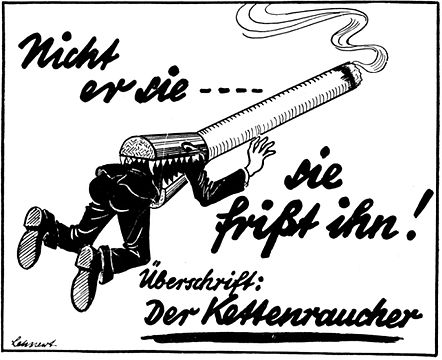Which Countries Smoke Most ... and Which Have the Best Anti-Smoking Ads
It's World No-Tobacco day, and at least as far as smoking goes, Eastern Europe leads the world.
Though Parisians are often the ones caricatured as perpetually (and nonchalantly) having cigarettes in hand, it's actually their neighbors to the east who light up the most. Serbia, Bulgaria, Greece, and Russia all top the list of the world's biggest smokers, going through more than 2,000 cigarettes per person annually:
Cigarettes are most expensive in Norway, Australia, and Great Britain -- a pack of Marlboros would run a Norwegian more than $15:
Granted, most restaurant food, alcoholic beverages, and certain other goods in Norway are taxed heavily, too, but the country has also levied annually increasing taxes on tobacco in particular with the goal of discouraging its use.
People in the poorer nations seem to be much less likely to smoke -- the countries where people light up least are Cameroon, Chad, and Ethiopia -- though the reasons are likely a combination of cultural factors and a lack of disposable income. Studies have shown that while smoking is becoming less popular in high-income countries, it's rising in middle-income and poor countries, particularly among men with a low economic status. Women worldwide are also taking up smoking at an earlier age. The reason? Big Tobacco is aggressively moving into new markets in Africa and elsewhere, and, having found the male smoker market saturated, are increasingly targeting women with their ads.
Meanwhile, tobacco use in Russia has become so widespread -- 40 percent of the population there smokes -- that the government has recently banned lighting up in public places. Hopefully the country won't see a repeat of the early 1990s, when cigarette shortages in the Soviet Union sparked riots.
"We are ready. This is going to be a harsh measure, but it is absolutely necessary. It will take time -- maybe another generation -- but we will succeed in defeating smoking and promoting a healthy lifestyle," a spokesman for Russia's First Deputy Prime Minister Igor Shuvalov told the Wall Street Journal.
In the U.S., 19 percent of the population smokes, but that number is 29 percent in Europe, where it's the biggest preventable cause of death and disease. A campaign launched in 2011 by the European Commission takes aim at smokers' vanity, rather than their health, by promising that "Ex-smokers look better, smell better, feel better and have more money":

Here are a few other clever examples of stop-smoking campaigns from around the world.
Ontario:

Australia:

United Kingdom:

France:

Serbia:

Brazil:

Germany (from 1941):

Perhaps those Norwegians are onto something.